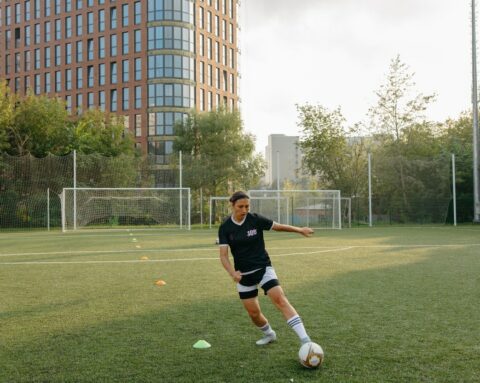It’s important to understand what to do when acute injury strikes. In the first 72 hours of certain injuries, it can be incredibly effective to ice the area. There is a chemical that causes muscles to contract and activate pain responses cause acetylcholine. Ice is fantastic at inhibiting the release of this chemical and not only reduces the pain you experience but also allows the injured muscles to relax whilst numbing the area. By reducing the temperature of your body at a certain point, the blood flow is pushed away from the site and directed toward protecting vital organs by providing them with sufficient blood flow, controlling swelling. Ice should be applied to the injured area for 10-20 minutes every 2 hours for the first 72 hours after injury. Place a layer of towel or something similar in between the ice and your skin.
After the initial 72-hour phase of an injury as well as for chronic pain and injuries it is extremely useful to apply heat. Heat is fantastic at encouraging blood flow to the affected area warming the underlying tissue. Pain is relieved as the rise in temperature allows for the muscles to relax and provides a reduction in spasm. The tissue is provided with a large number of nutrients which improves the health of injured structures. Additionally, the lymphatic system is able to filter out nasty metabolic products and injured debris far more effectively. As with Ice, heat stimulates sensory receptors which tricks the brain into assuming there is no or far less pain in that area. Heat should be applied to the affected areas for 20-30 minutes and if you are unable to find a heat pack, a hot shower or bath can do the trick!
One other technique we can use in managing acute injuries is to use trigger balls. Myofascial trigger points are knots and contractions that develop in muscles as responses to overuse and poor posture. The use of a trigger ball on a regular basis assists in reducing trigger point activity and helps to maintain flexibility reduces muscle tightness and improves musculoskeletal performance.
Strapping to prevent further joint injuries is also an essential way to manage injuries during the early stages. Rigid tape is a strong tape that contains no stretch and is used in situations where firm support is required. The rigidity of this tape helps to limit unwanted movement in a joint. It can also be used to offload muscle grounds where weakness has been identified, for example, taping the shoulder to encourage better postural positioning. Kinesio tape, on the other hand, is a flexible tape made up of cotton fibres with elastic woven into it. It has a high level of stretch and pliability that mimics the movement of the skin over the underlying tissue. Kinesio tape is stretched and applied to the skin which causes the skin to bunch and move away from the underlying soft tissue. This decompresses the underlying tissue making way for increased blood flow and improved lymphatic drainage. This means that kinesio tape is a fantastic tool in reducing pain and swelling.
Finally, it is important to understand the harm factors to avoid in the first 72 hours of injury. Number one of the list of things to avoid is heat! Heat can increase bleeding and swelling; however, it is extremely useful once the first 72 hours are up. Avoid using heat packs and limit hot showers and baths as much as possible. Number two is alcohol, Alcohol can delay healing and thins the blood. This can lead to increased swelling. At number three it is important to try to avoid strenuous exercise that could delay recovery substantially. Please check out our blog on active recovery HERE to check out some active recovery options that won’t impact your recovery. Number four speaks to the importance of avoiding massage. It is quite common for injured people to rush into physios and clinics following an injury looking for a massage. Whilst the injury is in the acute 72 hours phase there is a lot of inflammation and swelling. As a result, direct pressure on the site can worsen symptoms and delay recovery.
However, treatments around the site and addressing compensatory changes occurring\ as a result of injury can actually speed up the recovery process dramatically! Always ensure the treatment is performed by a qualified therapist so that your injury is properly managed, and you are able to recover as soon as possible. As always, Studio Musculoskeletal provides the absolute highest levels of treatment and care for your injury rehabilitation as well as the capacity to plan expert exercise regimes that account for any specifications you may need. We would love to hear any feedback on our blogs from you and please check back in a fortnights time for our next blog!






